How Weed Strains Get Their (Amusing, Provocative, Downright Wacky) Names
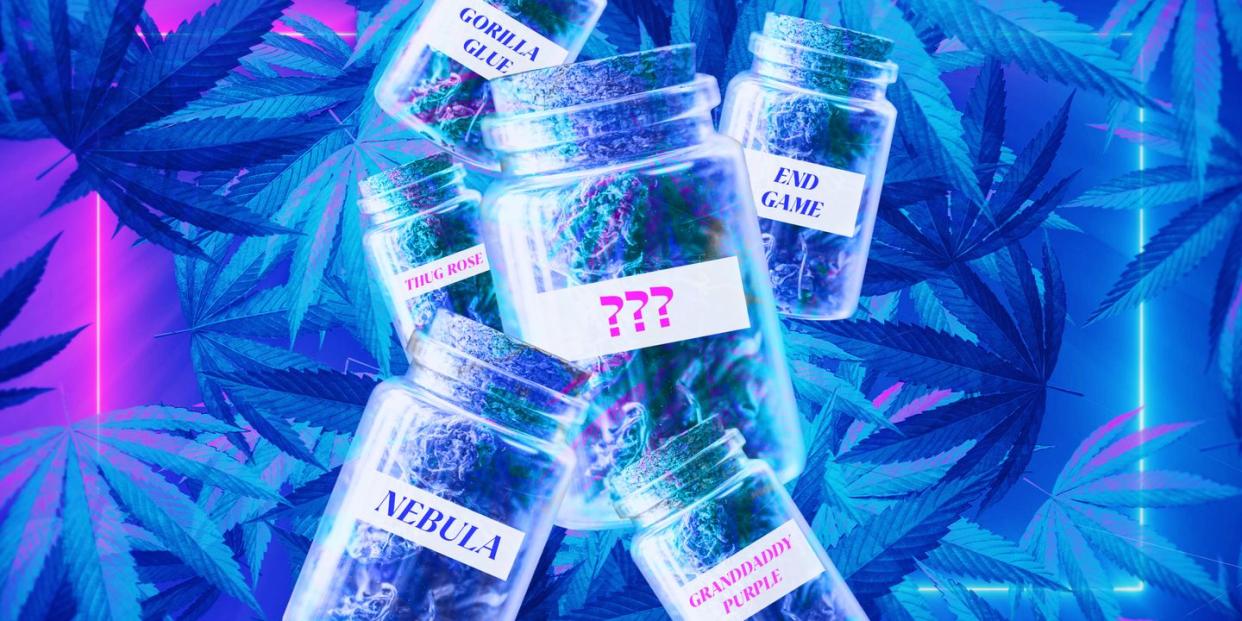
"Hearst Magazines and Yahoo may earn commission or revenue on some items through these links."
I grew up smoking cannabis—or “pot,” as I called it until about 20 minutes ago—crouching in a fetid little nook between a dumpster and a stack of tires at the neighborhood Texaco station, a place that already smelled like shit and where a few puffs of smoke and a little coughing wouldn’t catch anyone’s attention.
If, like me, you came of age before legalization, you will recall one thing about procuring weed back in the day: You didn’t have a lot of choices. In fact, you had one: nickel bag or a dime bag. You couldn’t specify indica or sativa, flower or edible, tincture or rosin or vape. You couldn’t select your THC content. You couldn’t choose between OG Kush or Bombay Crush, between Cheese Dog and Chem Dawg, between Grape Ape and Gorilla Glue. No. You got whatever Danny’s older brother sold you. And you were stoked.
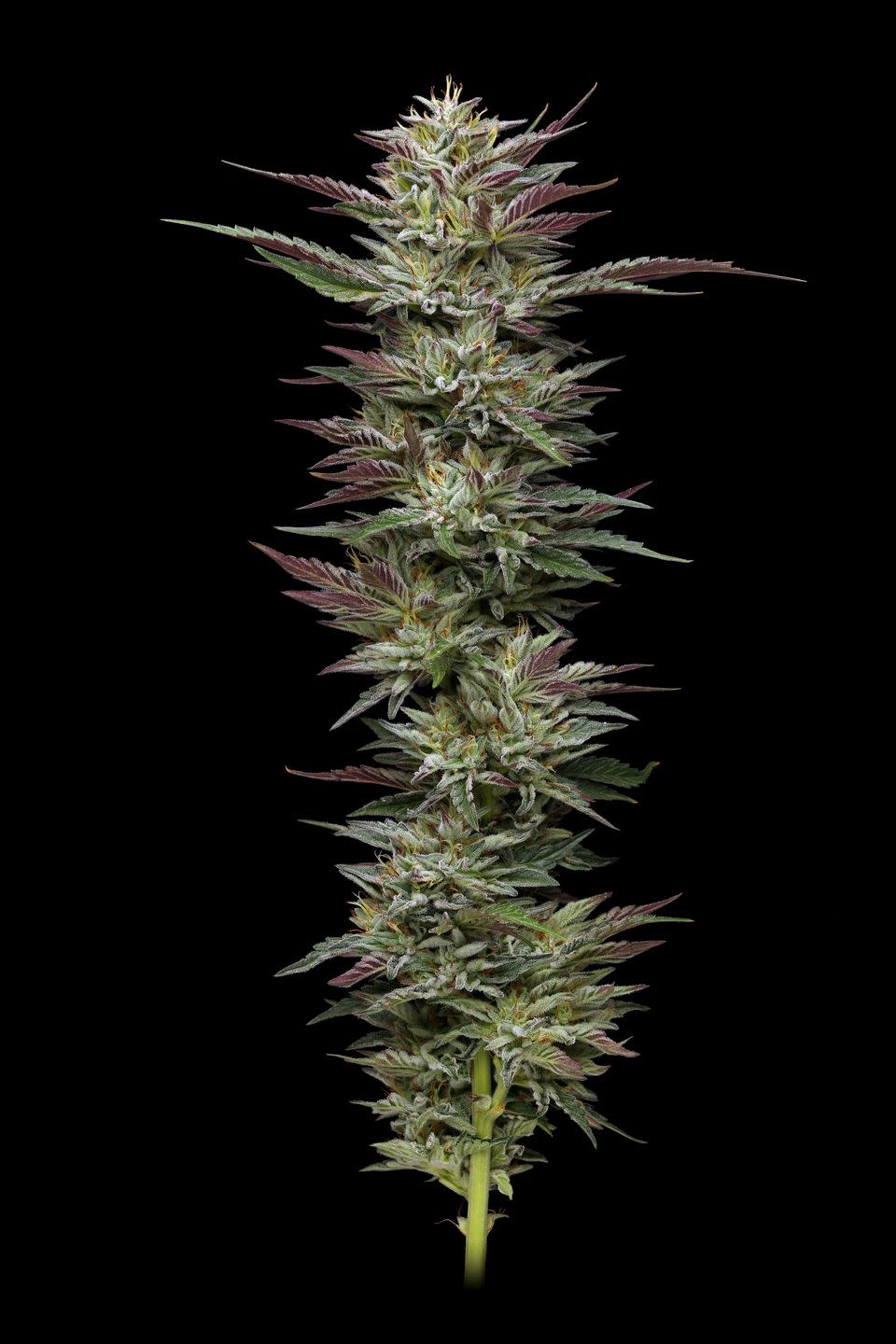
But that was then and this is now, and the cannabis space has entered a fascinating, fast-flowing moment where legalization—which begat commercialization, which begat corporatization, which begat commodification—has created today’s modern dispensary where the choices for consumers can be dizzying. As it turns out, there may be no better gauge of the changes rippling through cannabis culture than the humble menu at your local dispensary. Weed names have always added to the fun and intrigue (as a teen, even the relatively straightforward Thai Stick sounded entrancingly exotic), but today, as the power dynamic shifts from seller to buyer, and as growers and retailers find themselves strategizing to make their products stand out on increasingly crowded shelves, the names are taking on even more importance.
The names. Dear lord, the names. Strawberry Cough. Kosher Kush. Blueberry Mojito. Glueberry Slurm. Pineapple Trainwreck. Donkey Butter. Animal Face. Pink Panties. Purple Haze. Sour Joker. Sweet Jesus. Moby Dick. Fugu. Fatso.Tongue Kiss. Cat Piss.
Cat Piss?
Who comes up with this stuff … and how? Stoners trying to out-clever each other with inside stoner jokes about oblique stoner references? Advertising creatives at boutique firms working long hours in Stance socks? Gen Z focus groups run by blue-chip marketing firms with execs staring through one-way mirrors, scribbling notes?
The question of who names my weed has actually been banging around in my head since sometime late in 1978, when I was on the far side of 13 and my bar mitzvah money was burning a hole in my OP shorts. I’d managed to score a small bag of Maui Waui, and as a friend and I passed an anorexic doobie back and forth behind the Texaco tires, we ended up repeating the words Maui Waui Maui Waui—a name full of rhyme and promise—again and again until they became nothing more than strange sounds in our mouths. I never wondered about who grew my weed or even how it made its way to Danny’s older brother. I wondered who named it. Truth is, I still wonder about this every time I walk into a dispensary. And every time I walk out, small glass jar cupped in my hand.
I decided to find out. And what I learned from talking to folks up and down the weed chain—rock-star breeders and farmers, boutique retailers and publically traded cannabis corporations, a marketing exec who moved from Coca-Cola to cannabis—is not only who concocts these catchy names and how that concoction happens, but that legalization is quickly changing much about how naming will look in the future. “It’s a really complex time for naming,” one longtime farmer told me. That’s because as more people stream into the legalized market, the customer base is shape-shifting: We’re no longer talking about old hippies or young hip-hoppers but, well, everyone, from connoisseurs who focus on trichomes, terpines, and terroir to juice-cleansed “I’ll have the tincture, please” wellness types to, well, my mom. There are no stats on hippie consumers, or on my mom, but in just the last four years, the percentage of women-buyers bumped from 38 to 49 percent. And with the average dispensary customer now dropping $52 a month, retailers are feverishly looking to fill their cases with more SKUs, which means more—and more eye-catching—names. As amusingly goofy as cannabis names often are, a lot of thought can go into selecting a name.
Inside a Weed-Naming Session
If you thought, for even two seconds, that the cannabis business, with its counter-culture, middle-finger-to-the-system ethos would have a single method by which all new strains receive their name, you must be high. Ed Rosenthal is a case in point. Rosenthal, who, at 79, has been has been cultivating cannabis as long as anyone on the planet, who is so OG that he had a hand in creating High Times magazine back in ’74, who is so revered he had a strain named after him (Ed Rosenthal Super Bud), is himself not a whimsical namer. His approach has always been distinctly un-kaleidoscopic in its simplicity. “Each seed has a number and each plant has a number,” he explained to me. “And then the initial is a symbol of where I got it. So I had J1 and J2, like that. This wasn't popular with anybody else, but it worked for me.”
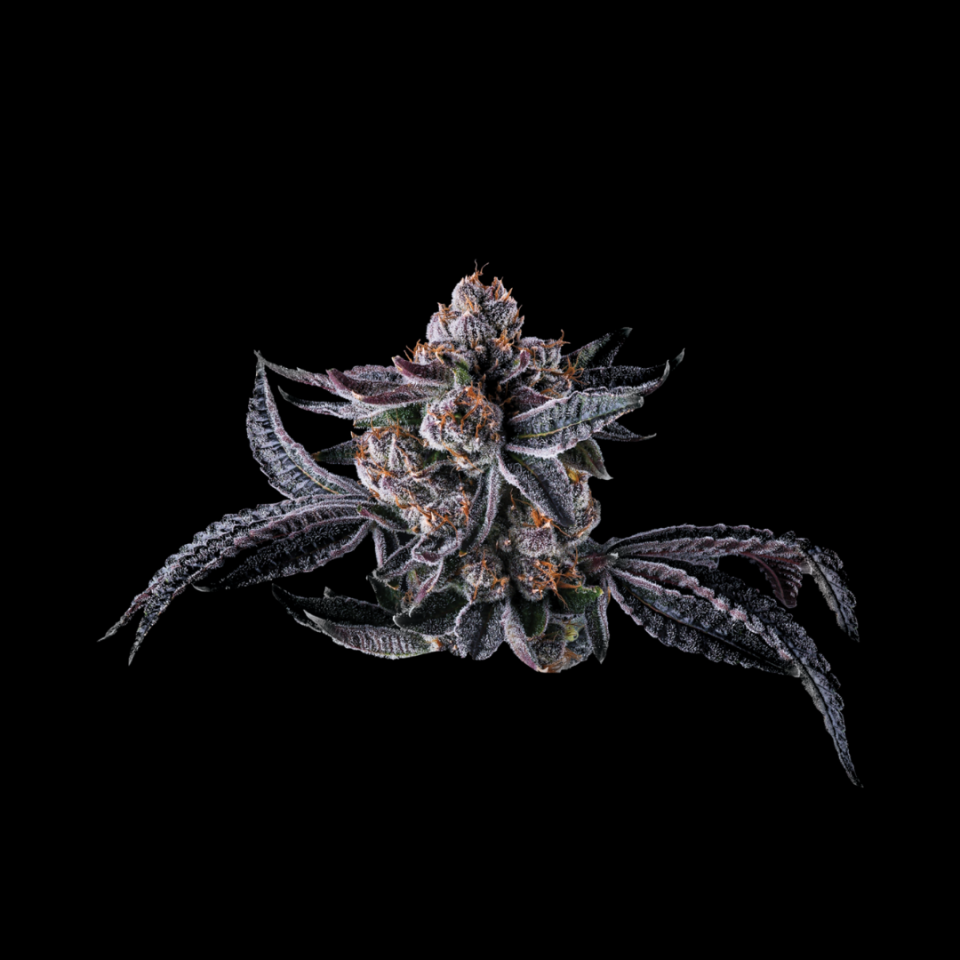
Things are different over at the 21-year-old Humboldt Seed Company, the largest licensed cannabis seed seller in California, which takes a more colorful approach to naming (Freakshow, Farmer’s Daughter, etc.). Ben Lind, its co-owner, has been growing and naming for 25 years (“I was introduced to cultivation when I was 14 by my Aunt Stephanie”) and describes HSC’s naming process as communal, a group effort involving smelling the flower, smoking the flower, and then brainstorming for a name that captures its essence. When I asked him if, like, you know, I might sit in on one of HSC’s naming sessions, Lind paused for a moment. Then his eyes lit up and he said, “That'd be awesome. I’d appreciate your outside-the-cannabis-box creativity! It could be really cool.”
It could be really cool. And if, by some chance, I were able to come up with the name for a strain that would be smoked and loved, that would be asked for, by name, at dispensaries around the country? A name with the resonance, longevity, and mouthfeel of Maui Waui? That could be even better than really cool.
A few weeks later, Lind’s naming team gathers atop a mountain, under a low-key pergola, in Humboldt County, at the northern end of California, surrounded by acres of cannabis and stalks that grow well overhead. The four of them, in unzipped jackets, hoodies, and beanies against the slight November bite, are there to accomplish one thing: name three new cannabis strains.
I am there, too, thanks to Zoom.
On my desk, next to my laptop, sit three numbered bags of cannabis, each holding a bud the size of a Greek fisherman’s thumb. These are the strains we’ll be naming. I have my Joan Jett lighter ready, as well as an ashtray, and a note pad; I’ve even prepped a few decent “kush” rhymes (harder than you think). There is no whiteboard at this naming session, no Sharpies, no Post-its. There is a donkey, Gus, who brays now and then in the Humboldt background.
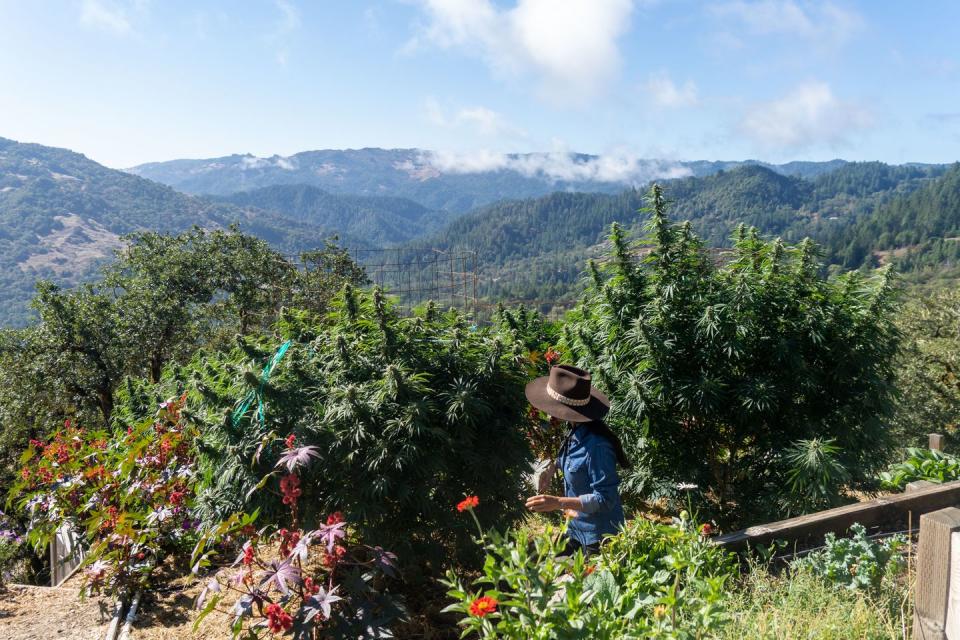
Ben Lind and the HSC team have come up with some memorable names in the past, from Purple Mountain Majesty (poetic if wordy) to Poddy Mouth (“It smells almost like halitosis but it’s doing really well”), and they clearly know what they’re doing. Lind, a lanky 6’4” with cumin-colored hair and smiling eyes, introduces me to the other namers—Ivan, HSC’s marketing director, brings his knowledge of how flavor and aroma affect experience; Jasmin, the chief operations officer, has 10 years of outdoor cultivation experience and a deep understanding of aromatherapy; Jeff, the head of cultivation, has been at it for more than two decades—and explains how the process will unroll: While smelling each of the three strains, we’ll share our impressions of the aroma, then we’ll smoke the first flower and get to the naming.
I watch as each team member pinches off a small budlet from Baggie #1. Chitchat stops; they each inhale slowly, thoughtfully, and then press the weed between two fingers—which releases the terpines, the organic chemicals in cannabis that give the flower its unique aroma—and breathe it in again, now jotting down notes. “If you go noseblind,” Ben tells me, “just smell the back of your hand.”(This works.)
Jasmin, upbeat, organized, nose ring, chimes in first: “I've got a sweet floral nose with hints of savory chocolate.”
Ben: “Savory chocolate. That could be a cool name. I’m getting a raspberry-chocolate or, like, a sweet chocolate-y note.”
Ivan, who with his dark-knit beanie has a Nicholson in Cuckoo’s Nest look, says: “I had a chocolate-coffee smell.”
Ben nods at me across the Zoom miles: “Bill, what are you getting?” I am getting exactly none of these “notes.” My nose, I realize, is a blunt instrument. And I confess this to the group, suddenly aware that if I can’t identify the all-important aroma, I won’t be of much use. Oh, I could add a bit of topspin to one of their ideas—Savory Chocolate could be dialed-up to Supa Savory Chocolate or twisted provocatively to Savage Chocolate—but I sense the chances of me forging a blockbuster name beginning to dwindle.
Ben moves to reassure me: “It's like any muscle,” he says. “It takes practice.”
Ivan: “Maybe you want to use the smell of the flower and see if that triggers any memories or visuals, maybe food, or something you smell at a gas station or a convenience store. That's the creative process we try to use sometimes.”
I did not anticipate inspiration springing from a convenience store, but I glance at the notes I’d jotted down while sniffing Bud #1 and see “campfire,” a word I now hear myself saying out loud. Was I, unconsciously, channeling some kind of s'more-chocolate aroma? After 10 minutes of contemplative sniffing, the team swerves into talk of terpines and trichomes (tiny crystal-like growths on the flower that hold the terpines, THC, and CBD), compares notes on the aromas of Buds #2 and #3, and then Ben says, “Let’s roll up some joints.”
We’re on to the main event. Rolling papers appear, get stuffed and sparked, because one cannot reasonably be expected to name a strain without knowing whether the flower floats like a butterfly or stings like a bee. I’m playing along at home with my own spliff from Bag #1, which my wife graciously rolled last night because I didn’t want the pressure of performing in front of the pros.
Ben hits #1, pauses, and says: “I’m getting a mint aura. Chocolate mint. I wonder if Chocolate Mint is already taken?”
Chocolate mint? I am well aware that there are “no bad ideas” in a brainstorm session, but I wasn’t here to give birth to a name as fecklessly Häagen-Dazian as “chocolate mint.” In any case, Jasmin, laptop open, starts typing the name into Leafly.com, whose voluminous online strain catalog is pretty much the Wikipedia of Weed. Chocolate Mint is taken.
Ben watches me take a drag and asks about the flavor notes I’m getting. “It was more like memory stuff, imagery stuff, not an actual taste I can put my finger on. Being at camp, or like running through a field … ” I trail off, aware that I’ve just replayed the visuals for a feminine hygiene ad.

Jeff is off-screen but says: “I like when a hit takes you back.”
Ben: “That's what's so cool about smell. It just smacks that frontal lobe and all of a sudden you're thinking about something you haven't thought about in a decade.”
Jasmin exhales a small cloud of smoke: “It would be cool to name it after summer camping.”
Ben: “Summer Camp?”
Jasmin: “Summer Camp!”
“Let’s check if that one's taken,” Ben says. Have I just witnessed a cannabis name coming into the world?! It feels like, you know, a moment. Then, from off camera, I hear Jeff chuckling. Within five seconds, they’re all cracking up for no reason that I can discern. Either an inside joke or … Joint #1 is kicking in.
Ivan: “Salute Your Shorts!”
Wild laughter. Yeah, it’s the joint.
Jeff: “Nickelodeon might get upset.”
Giggling on the mountain. Some coughing, too.
Ben: “I like the generic name, Summer Camp. I think it’s kind of a—”
I interrupt Ben and blurt out: “Okay, a riff on that running through a field image. What about Field Trip?”
I like this name because it has the nostalgic warmth of grade school, the “get away” association that feels like a break from the grind, and also the word “trip” which, well, yeah.
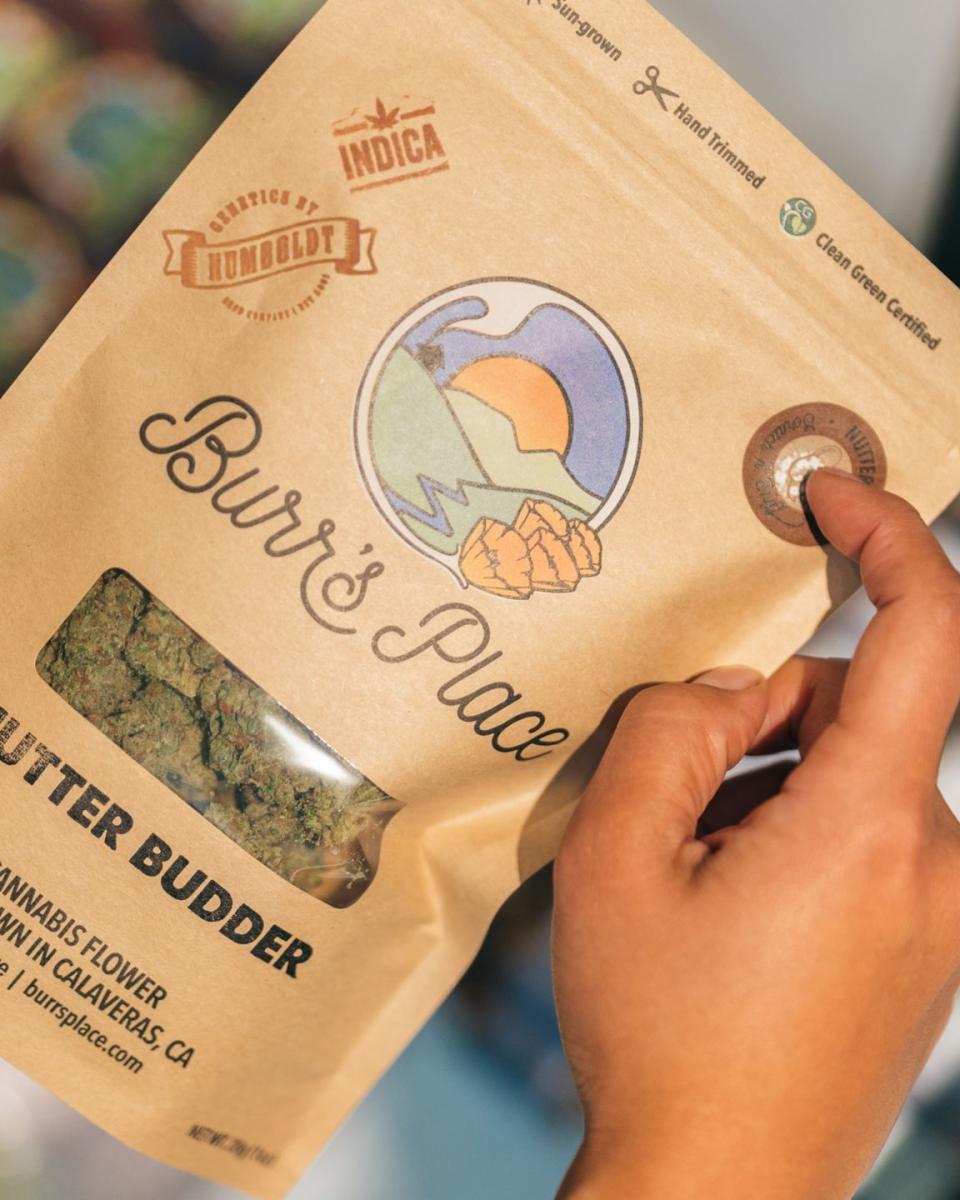
Jeff: “Oh, that's a good one.”
I am, as they say, hype. And thanks to Joint #1, I’m also bright, clear, focused, and unreasonably peppy. After a few minutes of energetic chatter, Ben & co. spark up a joint of Strain #2, as do I. Flush with Field Trip confidence, I hit #2 with gusto. My lungs fill. I hit it again. And again. The team seems newly focused.
Ivan takes a series of long, slow draws: “Mmmm. Floral perfume.”
Ben: “It has a little bit of wet dog.”
Wait a sec. I’m lost. How can one person get “floral perfume”and another get “wet dog”? But I’m also lost-lost. The snappiness of #1 has been washed away by a wave of … weight. Strain #2 is not fucking around and, just like that, I am very high and very heavy … and frozen in place. My immediate fear is that I’ve smoked too much and won’t be able to, you know, maintain, that my 12-pound finger will accidentally peck the wrong button and exit Zoom or, worse, that I’ll blink and forget to open my eyes. I have made a stupid mistake, like a noob wine taster who smugly snubs the spit bucket.
The conversation stumbles into silence and it quickly becomes evident that I’m far from alone in this slo-mo disorientation.
Jasmin clears her throat as if she’s about to speak … but doesn’t. After too long she says, “Salute Your Shorts is available.”
This is followed by an inappropriate amount laughter. Then there is talk of hay. And baby poop. And more laughter. The meeting is going sidewise.
Ben: “There's something really distinct about this one.”
Everyone nods solemnly, and I’m thinking, Yeah. We’re all sinking in quicksand!
Jasmin: “Like, it went to my head instantly.”
A moment goes by and then someone says something about pants. Is this really how strains get their names?
Ben: “This feels like instant head change.”
Ivan, staring into the beyond, says, “I feel settled.”
Jeff seems to have offered Jasmin one of his goats. Or maybe I’ve misunderstood. As I’m trying to parse the goat situation, I realize I haven’t said anything in … I don’t even know.
Jasmin: “This is ‘right before you go to bed’ weed. Not ‘When you have stuff to do today’ weed.”
Ben: “This is the total opposite.”
Jeff: “No, the other one was the opposite.”
Ben: “Are you sure?”
The thread has officially been lost. I feel the moment slipping away—I feel my really cool opportunity for naming a strain slipping away—and so I try to rally and get us back on track.
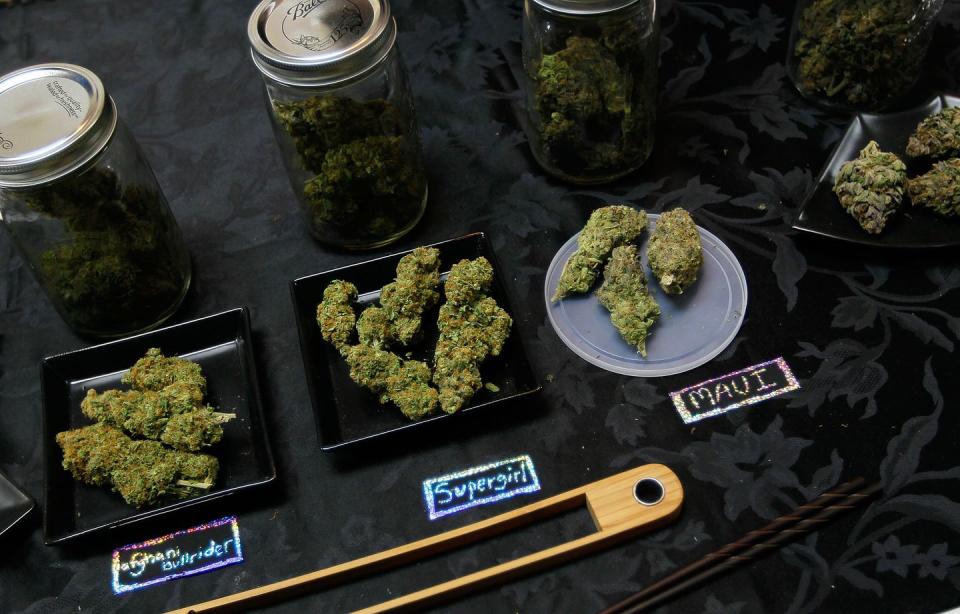
Me: “It puts me on the banks of a river, and, Jasmin, when you just said that about ‘not when you have stuff to do,’ the words ‘lazy river’ came to me.”
Ben: “Yes. You want to be chilling in the hammock as opposed to fishing.”
Jeff: “Tube Trip?”
Ivan: “I like Hammock.”
Ben: “I really like Hammock because it's one word. That's hard to find in a strain.”
Ivan: “I like Lazy River as well. I heard Freckle, too.”
No one had said Freckle.
And then it comes to me, a flash through dense fog, a rope in the quicksand.
Me: “Humboldt Hammock?”
Ben: “Humboldt Hammock.”
Ivan: “Humboldt Hammock.”
Jasmin: “Humboldt Hammock!!”
Like Maui Waui, it’s got location. And rhythm. And symmetry, two words with two syllables each. Like Maui Waui, it tells you what to expect and it’s got vibe. Also, it’s graced with alliteration and fits nicely in the Humboldt Seed Company brand. Holy shit, had I just named a strain?
Maybe … but a moment later someone chimes in with a solid suggestion (Heavy Hitter) and someone else lofts one from far left-field (Koala Piss) and then we spiral off into heady talk about the future of personalized medicine and how, with the help of the blockchain and an algorithm, linking your personal genome and the cannabis genome could result in weed suggestions that would be perfect for you. Or something like that.
That was pretty much how the meeting ended. There were no agreed-upon “next steps” or “action items to follow-up on.” I do manage to tell Ben that I’ll get in touch in a couple of weeks to see how Humboldt Hammock played with HSC’s other constituents.
Breeder’s Choice
It’s folks who breed cannabis, folks like Ben Lind, who are responsible for most of the weed names you think about when you think about weed names. These genetics-obsessed seedsmiths crossbreed various strains with the intention of highlighting specific characteristics (aromas, appearances, effects on users, time to flower, among others) and suppressing others. Even with today’s big-money stakes, cannabis farmers, retailers, and even publicly held, vertically integrated, multi-state operations mostly defer to names bestowed on the plant by the breeder.
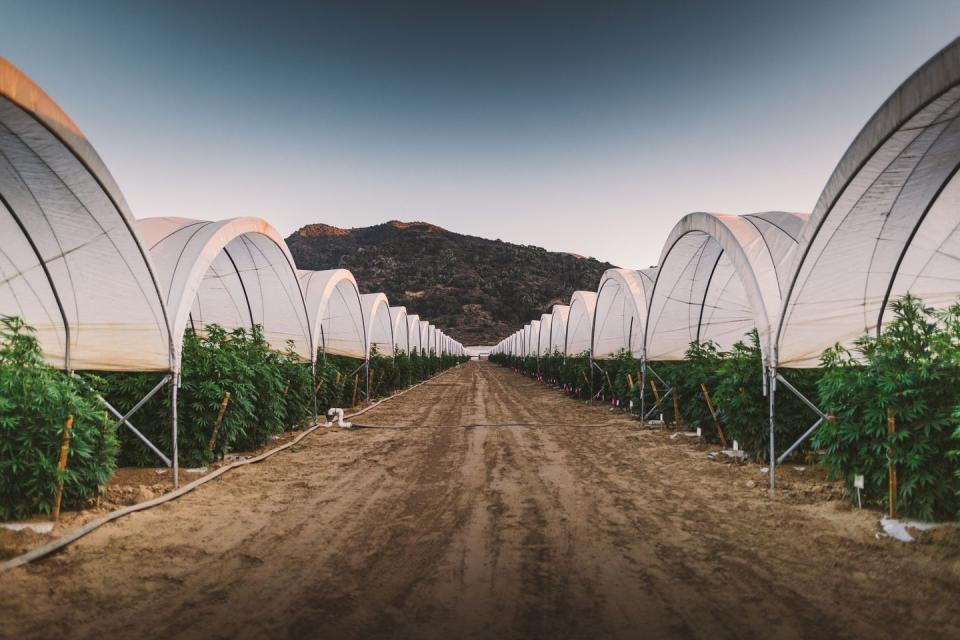
Theoretically, breeders can christen their new varietal with whatever wackadoodle name pops into their buzzy brains. But often they look backward, leaning on lineage and, in a creatively weedy way, saluting the two “parent” strains they’ve crossed when naming the child. A classic example: Blueberry crossed with White Widow gave us Berry White. Celebrated breeder Jesse Dodd, who’s been crossing and naming cannabis varietals for a quarter century, told me that he came up with the name for his Black Dog variety in 2012 by riffing on the names of its parents, Blackberry Kush and Sour Diesel OG. He recycled the “Black” from Blackberry, then took the “D” from Diesel and the “OG” to create Black Dog. (“Everyone loves dogs,” he told me, “and I like the Led Zeppelin reference.”) For truly savvy smokers, the info embedded within this name offers a 23andMe look at what they’re ingesting; they might, for instance, correctly surmise that the “Black” is indeed from Blackberry Kush, a strain known for its relaxing effects. For them, the name holds a clever “Easter Egg” appeal. This form of inside baseball, however, is absolutely lost on casual buyers who might just have a thing for dogs. So, yeah, many of the names work on different levels. And while some names are carefully considered, crafted and chiseled from hundreds of possibilities, others can be whipped off in a moment of smoky “inspiration.” It can be hard to tell the difference.
More recently, Dodd (who breeds under the name Biovortex) collaborated on a new varietal with Tina Gordon, a grower whose Moon Made Farms spans two 40-acre hilltop parcels in the heart of Northern California’s Emerald Triangle, the country’s largest cannabis-producing region. Gordon is earthy, spiritual, smart, and sharp-focused on names that “honor the plant and the place where it’s grown,” and that “help the person understand the sacred, ancient plant they’re ingesting.”
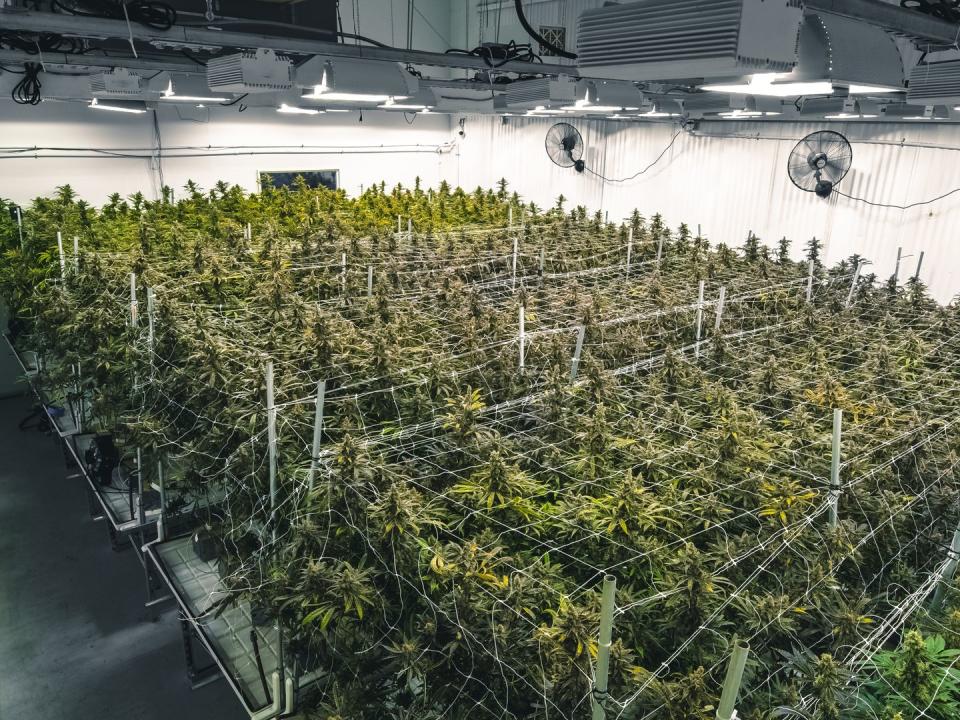
For the new varietal, a specific expression of Cherry Lime Dog (which itself was born from Cherry Lime Pop and Dodd’s own Black Dog), Gordon and Dodd held a few brainstorming sessions. “Everything that is here comes from somewhere else,” Gordon told me, echoing a widely held sentiment. “That's an important piece to acknowledge in the name.” And so they considered the name Cherry Lime Dog. “That didn’t resonate with me,” Gordon says. “I was looking for a bit more feminine symbolism.” Then they kicked around other names, like Cherry Pop (“Too much of an association with soda pop and high-fructose corn syrup”) and Cherry Fizz (“I didn’t see the cherry as a cartoonish cherry but a deep red, a blood red, mature cherry,” Gordon says, “which brings in the feminine”). Ultimately, they landed on Cherry Moon, a name that captured the associations Gordon was looking for. Still, she says, “I had to smoke the flower and feel the flower several times to know that Cherry Moon was the right name.”
Why So Much Weed Is Named After Dessert
The name, of course, isn’t the only factor driving a buying decision. How the bud looks is huge, obviously, as is how it smells. But even before the budtender twists open the jar, a customer has almost certainly glanced at the menu, seen the strain names, and, even if on an unconscious level, reacted to those names with intrigue, aversion, or indifference. The names are often the first point of contact. And as the cannabis industry continues to blossom—sales in the US are forecast to rise from $17 billion in 2022 to $31.3 billion in 2026, according to the BDSA, a market research group specializing in cannabis trends—the names themselves are receiving more focus. Fun won’t cut it anymore; they have to be functional, too.
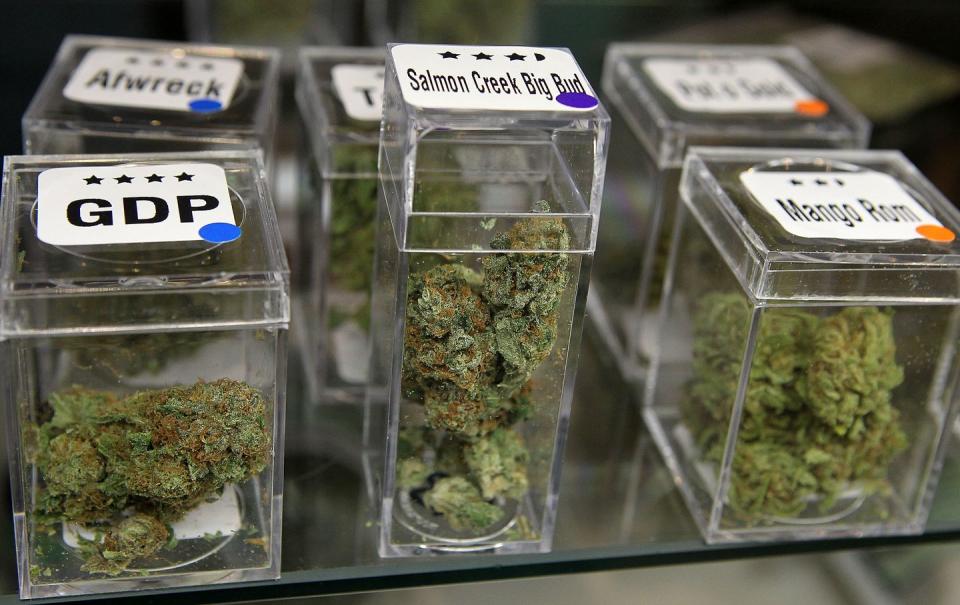
Before weed-breeding science got all sophisticated, and a plant’s genetic traits could be identified and selected, the location where the original plants were grown drove the naming convention. Thus, the bare-bones Thai, Colombian, Panama Red, and Acapulco Gold of the ’70s. “It could even get as specific as which valley in Pakistan or Afghanistan it came from,” says Auryn McCafferty, an acclaimed breeder and the founder of Purple City Genetics, in Oakland, California. McCafferty grew up in the world of cannabis (pops might have smuggled a little) and has a clear-eyed perspective on how strain names have evolved. McCafferty says there are now so many factors that can be controlled, bred for, and singled out, that the trait-descriptive name has mostly kicked geography to the curb. Some names, for instance, focus on the promise of the weed’s effects: Amnesia, Trainwreck, and 9LB Hammer forecast a certain this-means-couch-lock outcome, while Lazy Lightning and Blue Dream connote more chill, less drooling. Others, like Granddaddy Purple or White Widow, focus on the flower’s physical attributes, like the colors on the bud.
These days, namers seem most obsessed with flavor and, specifically, with dessert. In fact, anyone perusing a dispensary menu would be forgiven if they mistook it for that of a sweet shop. You’ve got your cake (Oreo Cake, Sour Cake, Cake Bomb, Cake Face, Cake Breath), your cookies (Girl Scout Cookies, Peyote Cookies, Obama’s Purple Cookies), and your candy (Pinata Candy, Wonka Bars, Skittlez). Everything, really: Crème Brulee, Forbidden Muffin, Guava Gelato, Waffle Cone, Pie Hoe, among hundreds of others. To my low-carb palette, these names feel derivative and pandering, not to mention highly caloric. Only Divorce Cake seems inspired.
Josette Celis is the director of merchandising at MedMen, a publicly traded retail chain with two dozen shops across six states, many of which have a slick, Apple Store vibe. Celis, who came to cannabis from the fashion industry, “oversees the onboarding of new products” and assesses how well those products sell. When I ask her about the recent infatuation with dessert names, she doesn’t sugarcoat it: The trend is mostly driven by the retail market’s efforts to make things feel safe and cuddly for new users. “The strain name really comes into importance when somebody is introducing themselves to cannabis” and might feel “overwhelmed by the dispensary experience.” All those cake-candy-muffin names are “trying to promote familiarity in an unknown situation,” she says. “The customer might be thinking, ‘I don't know what Kush means. I don't know what Durban Poison means, but I know what gelato is, and I've had a wedding cake before. I can dabble in that!’”
Pop Culture Becomes Pot Culture
Personally, I do not want my coffee to taste like hazelnut and I do not want my weed to taste like Peanut Butter Gelato. Or Blueberry Cheesecake. Or Pink Cookies, whatever pink cookies taste like. But recently, while being ignored by an obviously blazing budtender at a local dispensary, I found myself gravitating toward Tie Dye, a strain clearly named to attract someone (like me) who bought his first ticket to a Grateful Dead show about when John Mayer scored his first teddy bear; meanwhile, a younger patron at the other end of the counter was asking about Khalifa Kush, a strain from Wiz Khalifia.
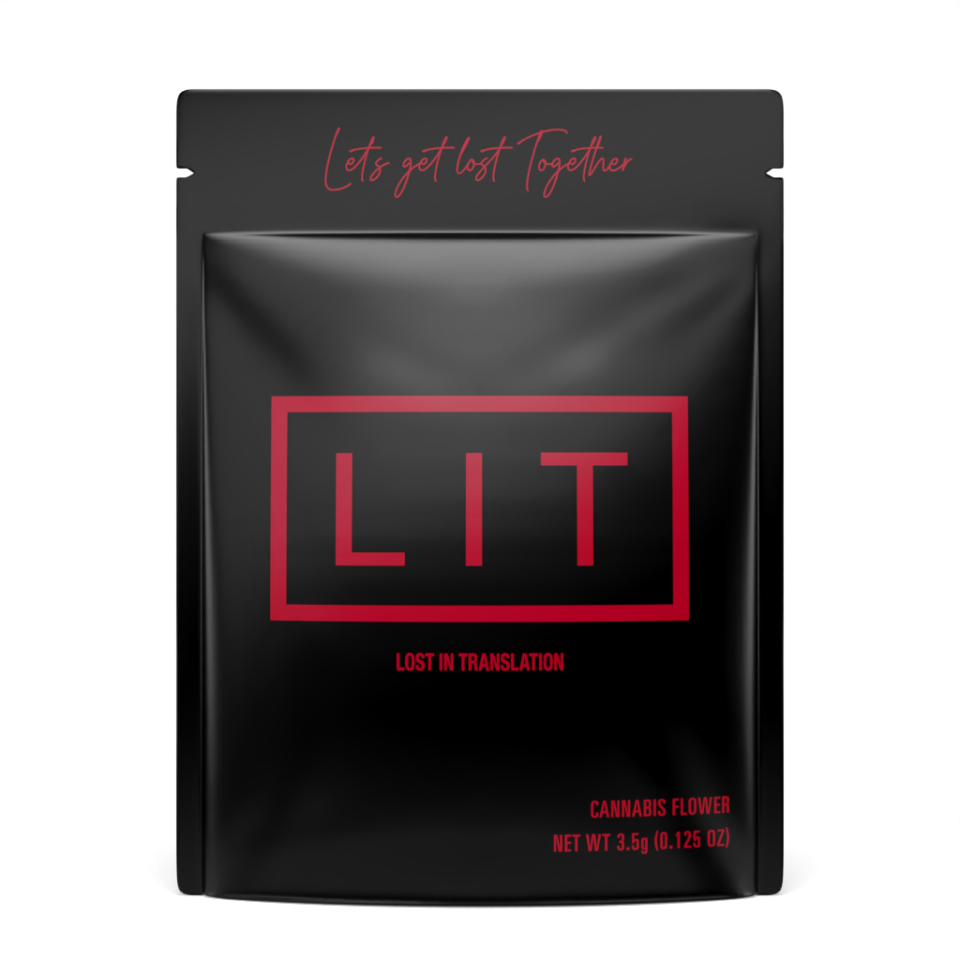
For those searching for something familiar but who are unmoved by dessert, weed shops now teem with strain names that offer a sort of tribal affiliation. Old-school hoopsters have Gary Payton, Black Mamba, and Larry Bird, while Wookie’s Cookies, OG Skywalker, and Bubba Fett speak to the Star Wars set. The science-minded have Stephen Hawking Kush and Einstein’s Pipe. At $45 an eighth, I can see why cannabis rookies would hitch their spotless beaker bongs to Blue Ivy or FreeBritney rather than take a roulette spin on Purple Monkey Balls.
When did weed names turn all pop-culture-y, sliding from OG Kush to Margaret Cho-G? That would be about 2008, McCafferty told me, when the Obama administration made it clear they weren’t going to bring the nine-pound hammer down on medical cannabis. Shelf space at medical dispensaries became competitive, “which changed the way growers and breeders thought about names,” he says. “No more sandwich baggies. Now it’s a jar with a label.” This was the moment dispensaries started focusing more on differentiation and branding. “Every grower has experienced something with a cool name selling fastest,” he says, “so guys were, like, ‘Hey, maybe we can we borrow something funny from popular culture.’” If you wanted to sell an edible cookie, he explains, “you'd be, like, Buds Ahoy instead of Chips Ahoy, and you’d basically steal their colors and their logo. A lot of the naming went the same route.” When recreational kicked in, it was like a Zeitgeist bomb went off.
Which is pretty much when the lawyers started cranking out cease and desist letters. The Girl Scouts of America sent its legal team to stop their trademark from being used as the name for a wildly popular strain called Girl Scout Cookies, whereupon growers and retailers promptly renamed it Cookies and GSC. Likewise, the Hershey Company put an end to the Jelly Ranchers name. (“We thought it was different enough,” its breeder told me.) And the beloved Gorilla Glue strain now mostly appears as the inelegantly truncated Glue or GG. The names appearing on menus today have likely been cleared by lawyers (wary of trademark claims), state regulators (wary of names that would appeal to children), and by the breeder to ensure that the name is unique in the cannabis world. Scoring an original name is no slam dunk: In 2013, Leafly’s almighty database held 2,700 strain names; today, it lists 6,211. “It’s like the run on domain names in the early ’90s,” Ben Lind told me. “It’s become very hard to find a name that hasn't already been taken.”
A Big Whiff
While much of the industry is focusing its names on neophytes, others target the connoisseur class. Over the course of his cannabis career, Khalid Al-Naser tells me, he has personally named more than 1,000 strains. The co-founder of Raw Garden, a company with 200 employees that breeds, grows, manufactures, and sells some 500 cannabis products a year, Al-Naser has a soft spot for lyrical names (“We love when we can get a name where the first letter of two words is the same, or when the back end rhymes a little bit. Something like Blue Glue becomes inherently fun to say.”). But Al-Naser believes the most helpful name for the consumer—and ultimately the most successful—is one that highlights the plant’s aroma because that offers the customer the simplest way to find a product that comports with their expectations.
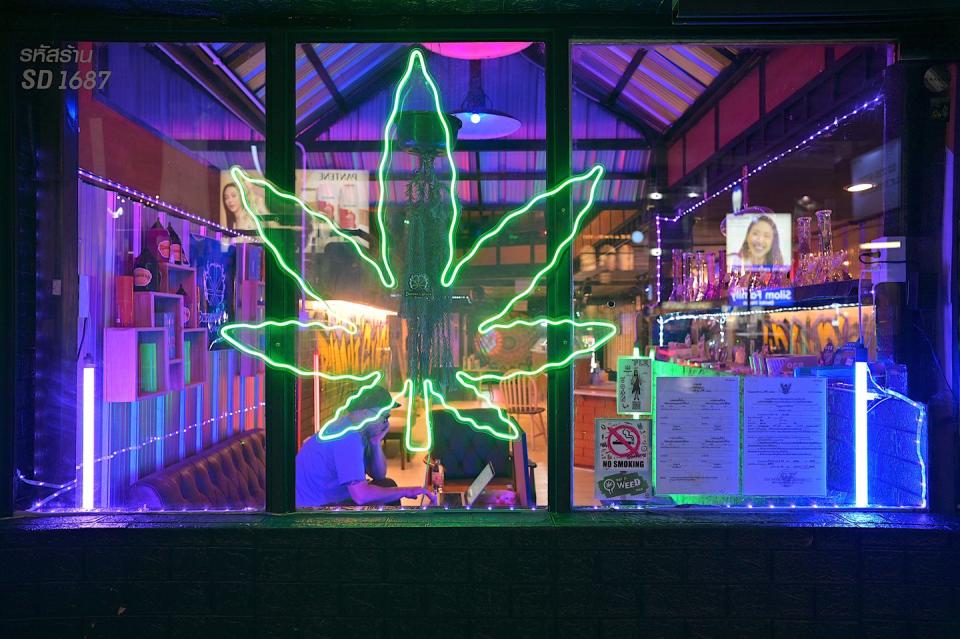
When I asked Al-Naser how his team approaches naming, he described a small “think tank” of three to five staffers who “are very specifically focused on aromas, because, for us, smell is really where the name is born.” But recently Raw Garden, now one of the largest brands, by dollar, in California, has actually begun to de-emphasize the strain’s name, reimagining its packaging by adding an aroma icon, like a picture of a lemon or a berry. Al-Naser says that “if a customer’s looking at a package of Blue Glue and there's a picture of berries, he might think, ‘Oh, I like berries.’ He leans in a little closer and notices the packaging has tasting notes: berry, sugary.” The hope, he says, is that “that nomenclature and that explanation decouples the importance of the name and starts to enable the consumers to educate themselves.”
In fact, he believes that buying an eighth of cannabis will soon become a lot more like shopping for a bottle of wine: If you know you like Pinot Noir, the name on the bottle, regardless of how evocative, becomes somewhat irrelevant. “Since the cannabis plant is a varietal, it’s dictated as much by the people farming it as it is by subtle shifts in the weather, changes to the nutrients and soil, etc.,” he told me. “That's why I think eventually what you're going to see is that farms, farm locations, and the date it was harvested—the terroir—all start to become important to a certain class of consumer.” For the connoisseur, the farm becomes critical because Sour Diesel grown by two distinct farms likely won’t smell or feel identical despite having the same name.
Cannabis Meets Consumer Packaged Goods
In the weed business, there’s a growing consensus that strain naming will have to evolve in order to keep up with the expanding galaxy of buyers. That makes sense to Jeff Finnerty who, after 16 years at Coca-Cola, became CMO at Ayr Wellness, a Miami-based publicly traded company that cultivates and retails cannabis, including the cannabis-infused drinks Levia and Cannapunch, names that ping rather corporate to my ear.
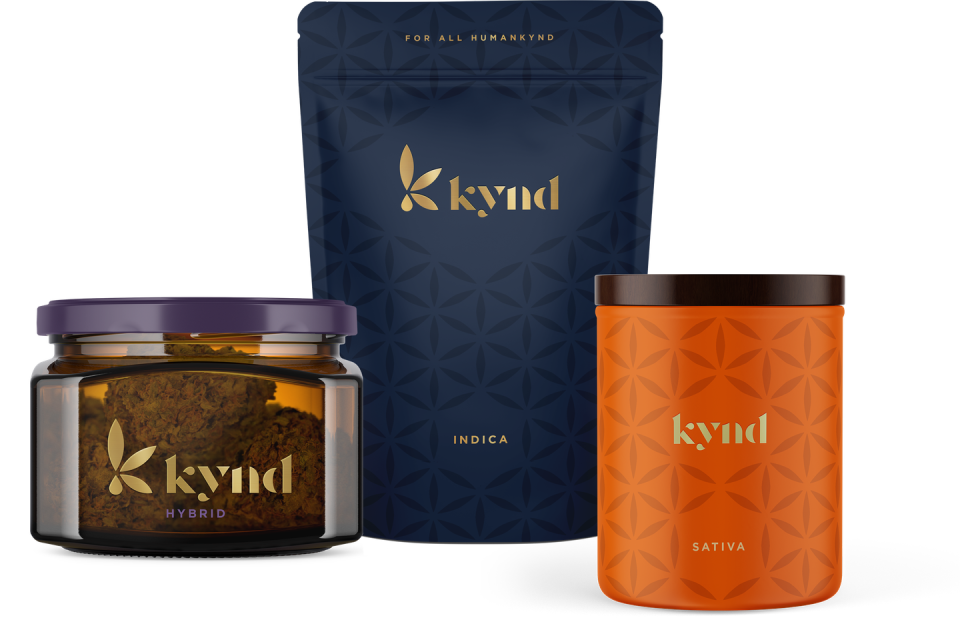
When Finnerty came to Ayr, he told me, one of the first things he did was use the modern tools and tactics of the consumer packaged goods industry to begin “studying the cannabis consumer and their behavior and motivations and need states and use cases.” In the cannabis space, he says, “nobody has really invested the time and resources into doing that.”
Finnerty sees some names becoming incredibly straightforward, as in Yeah, man, I’ll have a gram of Relaxed and a pre-roll of Focus. This simplified approach, he says, “will take away some of the tyranny of choice” that new users find so paralyzing. (Not long after I spoke with Finnerty, he left Ayr in the wake of a management change.) MedMen is already “starting to play around with grouping our products by effect,” Celis told me, creating store sections focused on sleep, wellness, and creativity. They have vape products, she says, that “promote sexual wellness, which are called Love Drop and Arouse. So it's very on the nose.” My prediction, for what it’s worth, is that we’ll see a middle-path approach, with strains that promote artistic expression, for instance, taking names like Kush Creative and Purple Painter. One thing is all but certain: As packaging becomes more important—using graphic design to clearly brand a farm’s products—there will be less physical room on the label for traditionally colorful (yet long-winded) names; I can almost hear the creative director shrieking, “Great Green Tsunami won’t fit! Let’s just go with Big Wave.”
The Making of a Memorable Name
I’m speaking with the man who gave the name “Outback” to Subaru, the name “Pentium” to Intel’s processor, the man who named the Swiffer, the Blackberry, the Impossible Burger, not to mention Dasani, Sonos, and Febreze. His name is David Placek, and David Placek and I are talking about weed. Specifically, we’re talking about the names given to cannabis strains and whether Placek, whose Sausalito-based Lexicon Branding has notched some 3,600 consumer product names, thinks the most popular strain names have a winning ring to them. If corporate America ever comes hard for cannabis names, Placek’s insights would likely filter onto dispensary labels.
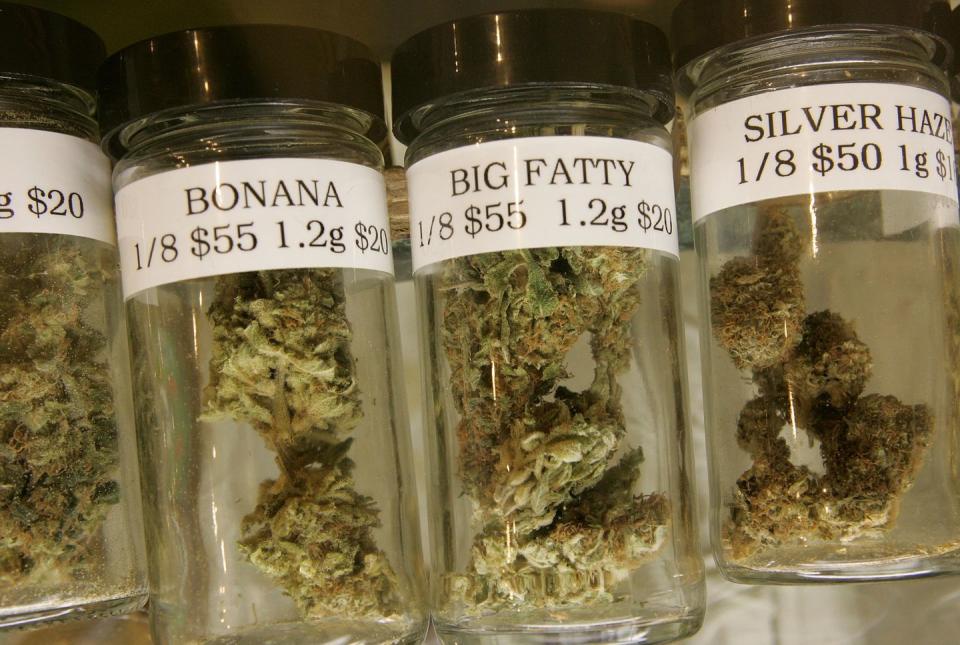
Placek, at least in my estimation, is not the wake-n-bake type, and Lexicon has yet to name a cannabis strain. Still, over the course of 30-plus years, he has conducted loads of proprietary research and stockpiled reams of knowledge, for which clients looking for a breakout name are willing to pay $65,000 or more. Names with a “noisy Z,” Placek told me, stand out because the sound “helps to punch through the marketplace a little bit”; likewise, names with “associative qualities” also work well—his “Febreze” hints at “breeze” and “fresh” and has that noisy Z. He also says, “The best names come from a combination of being familiar and surprising. It's easy to be surprising,” he explains, “and it's easy to be familiar. But what's challenging is to create something that's surprising and familiar.”
I start our lightning round by asking Placek about my old friend, Maui Waui.
“Great name, playful. The rhyme makes it memorable. There are associative qualities of the wow in there. Very good job.”
Sour Diesel?
“Not very appealing. Let me put it this way, I would say that's a bad name.”
Wedding Cake?
“Huge appetite appeal, very memorable. Right away, you get an image in your mind of a wedding cake, which is positive. That's a good name.”
Alaskan Thunder Fuck?
“Wow. That's a lot of attitude. It suggests the promise of a definite experience. It's certainly going to appeal to a segment of people, but the attitude of it will be off-putting to others.”
Girl Scout Cookies?
“They get an ‘A’ for humor, but it’s not the most effective name. They’re getting some appetite appeal in there, which is good. But the name takes you into such solidified imagery with Girl Scouts that it's going to be hard for people to bring that back to cannabis.”
How about Tina Gordon’s Cherry Moon?
“Moon's a great image. It's relaxing, very memorable, easy to say. Cherry Moon. It's a softer name. She’s really delivering on her goal there.”
It was time to slip the naming master a bit of my own handiwork. What, I ask him, do you think of Humboldt Hammock?
“I appreciate the cleverness of the hammock to get at relaxation and it could lead to an interesting and reinforcing visual. However, the length, the letter structure, and the sound symbolism of the two-word name actually fight against the idea of relaxation. Hum-Bolt-Ham-Mock is a very choppy sequence.”
Humboldt Hammock has not inspired Placek to reach for a bong.
I let a couple of weeks go by but find myself wanting to see if Humboldt Hammock is still sitting pretty with Ben Lind and the rest of the Humboldt Seed Company crew. Plenty can happen in two weeks. Maybe the car-crash attraction of Koala Piss was too much to pass up. I call Ben and mention something I can’t recall about a subject I can’t remember, then cut to the chase: How does Humboldt Hammock feel in the cold light of day?
“I still like it,” he says, sounding legit enthusiastic. “Hammock is one word that carries a lot of meaning in our culture. It’s a chill-out, relaxing weekend rather than having to mow the lawn.”
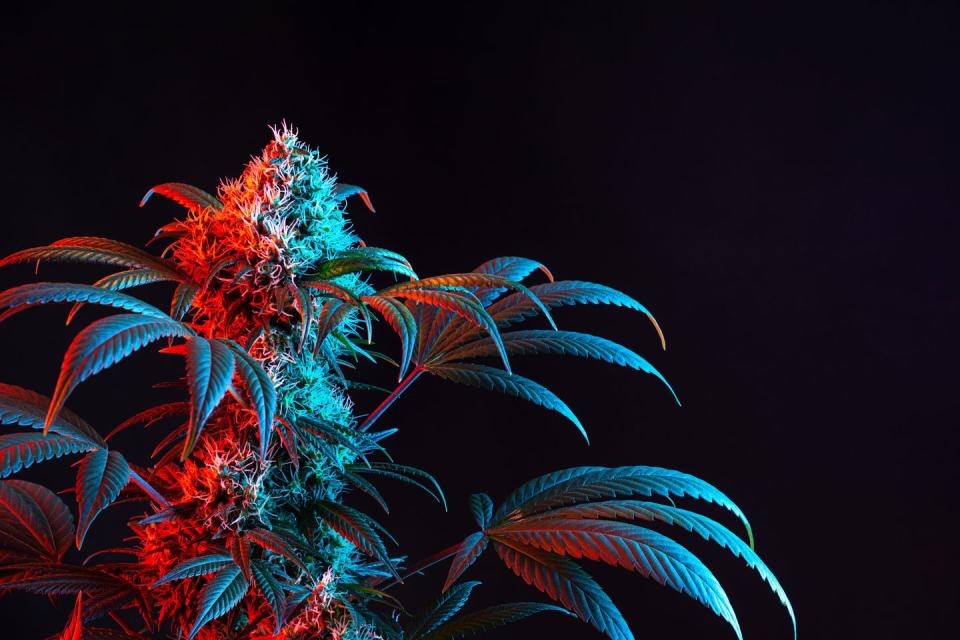
Hell, yeah! Just because David Placek, the man who named PowerBook, Embassy Suites, and Fios, doesn’t like the “letter structure” doesn’t mean it isn’t the perfect name for stoners. If Humboldt Seed Company, itself one of the most respected names in the business, goes all in on Humboldt Hammock, well, my children will have a story to tell their children.
Ben keeps singing the name’s praises: “Everyone knows what you’re talking about with the word Humboldt; it’s a low-key way of saying cannabis without actually saying it,” he chirps. “I also like the imagery that can be associated with the packaging: A couple of redwood trees and a puff of smoke. That definitely helps with marketing and communication to the customer.”
Time to lay it on the line: “So Ben,” I ask, “What are the chances that we’ll see Humboldt Hammock on store shelves?” This was pretty much the moment of truth. He pauses slightly and then, “I’d say 80 percent.”
A month or so later, I get a text from Ben: “Not sure Humboldt Hammock will get released this year.”
I don’t like where this is going and take a breath.
“Blueberry Pancakes, California Octane, Jelly Donutz, and Gazzpurple will be our 2023 releases.”
As I read the name Jelly Donutz, I feel my strain-naming dream go up in … well, you know. But the truth is, naming weed is not unlike a jelly donut: It has always been messy. And, as corporate marketing departments start to rub up against traditionalists, it’s about to get messier. Will the next generation of namers be thinking like pharma execs with their sterile-sounding Paxils, Lexapros, and Lunestas? Will it all head toward Ed Rosenthal-style numbers … or to hieroglyphics representing a range of fruit and gas station smells … or will it devolve, like everything else on this planet, into just more celebrity-branded products? Regardless of what we call it or how we name it, one has to marvel at the power of this plant, this plant that has been around for millennia—found in the ruins of Viking ships, mentioned by Herodotus, used on altars in the Kingdom of Judah—and has spread to every corner of our world. As one breeder told me, between puffs, “Maybe the only reason humans are even here at all is to propagate this sacred plant.”
You Might Also Like

